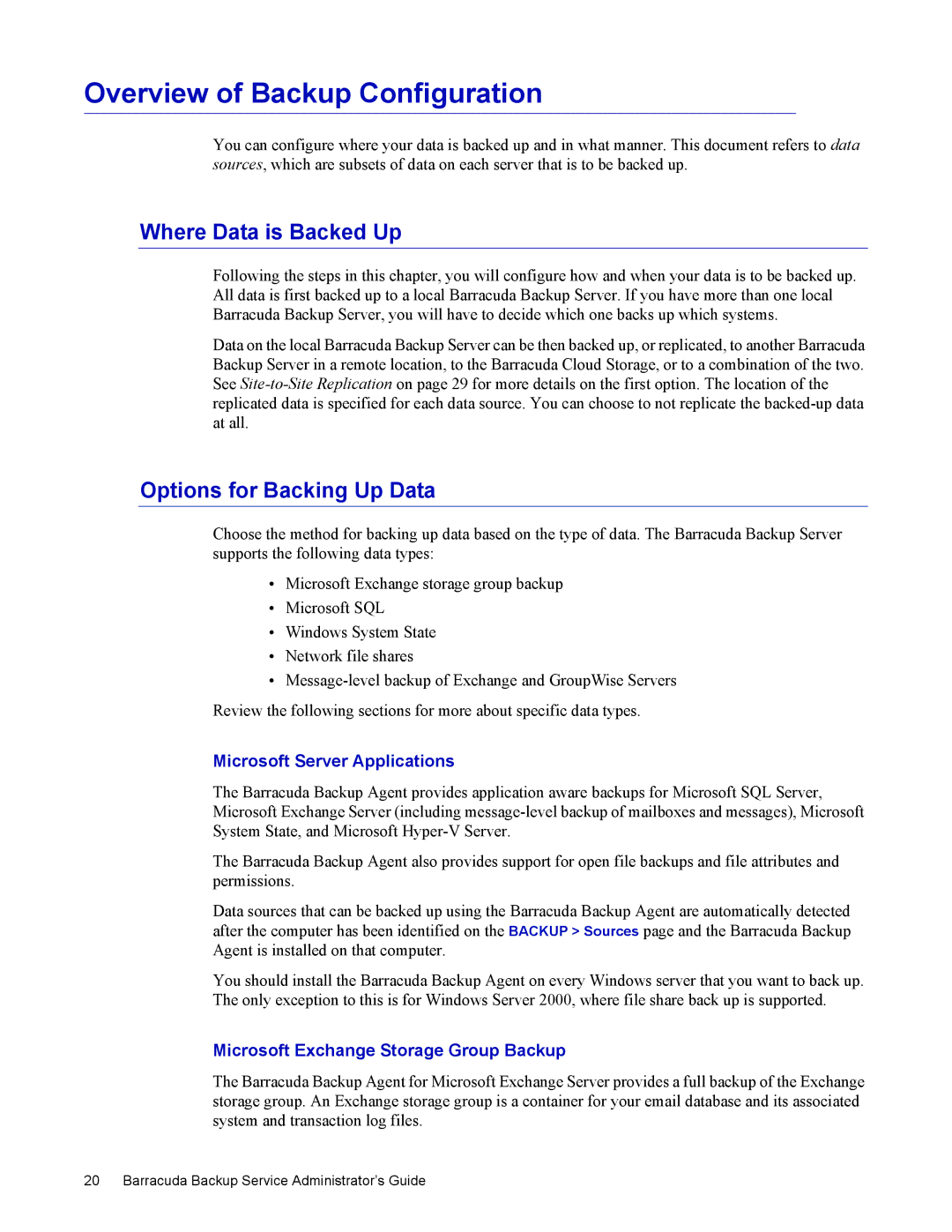
Overview of Backup Configuration
You can configure where your data is backed up and in what manner. This document refers to data sources, which are subsets of data on each server that is to be backed up.
Where Data is Backed Up
Following the steps in this chapter, you will configure how and when your data is to be backed up. All data is first backed up to a local Barracuda Backup Server. If you have more than one local Barracuda Backup Server, you will have to decide which one backs up which systems.
Data on the local Barracuda Backup Server can be then backed up, or replicated, to another Barracuda Backup Server in a remote location, to the Barracuda Cloud Storage, or to a combination of the two. See
Options for Backing Up Data
Choose the method for backing up data based on the type of data. The Barracuda Backup Server supports the following data types:
•Microsoft Exchange storage group backup
•Microsoft SQL
•Windows System State
•Network file shares
•
Review the following sections for more about specific data types.
Microsoft Server Applications
The Barracuda Backup Agent provides application aware backups for Microsoft SQL Server, Microsoft Exchange Server (including
The Barracuda Backup Agent also provides support for open file backups and file attributes and permissions.
Data sources that can be backed up using the Barracuda Backup Agent are automatically detected after the computer has been identified on the BACKUP > Sources page and the Barracuda Backup Agent is installed on that computer.
You should install the Barracuda Backup Agent on every Windows server that you want to back up. The only exception to this is for Windows Server 2000, where file share back up is supported.
Microsoft Exchange Storage Group Backup
The Barracuda Backup Agent for Microsoft Exchange Server provides a full backup of the Exchange storage group. An Exchange storage group is a container for your email database and its associated system and transaction log files.
